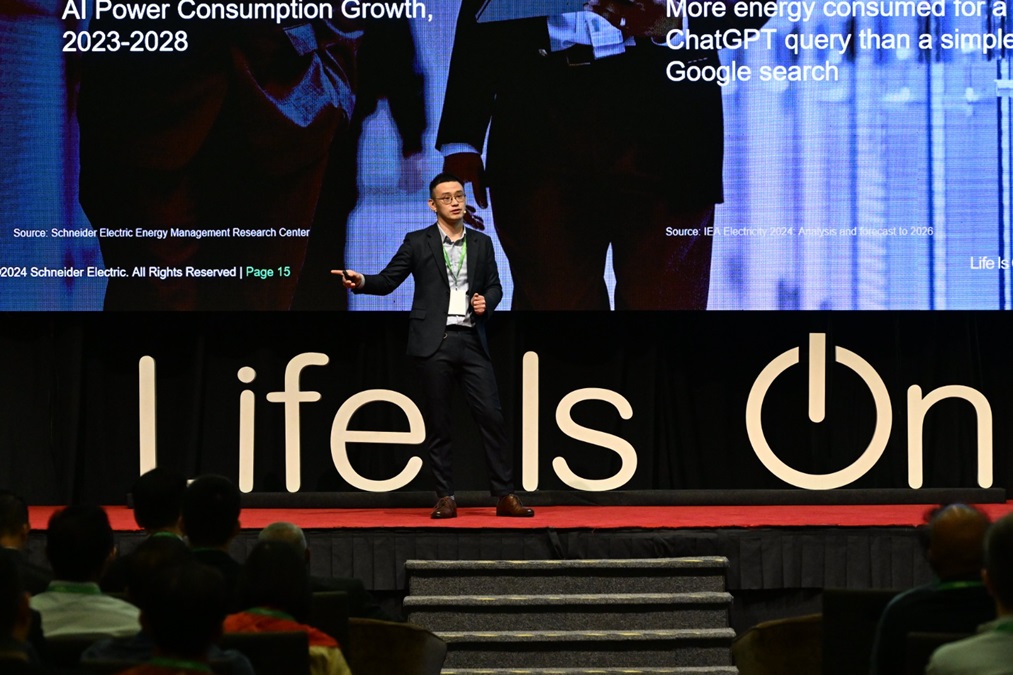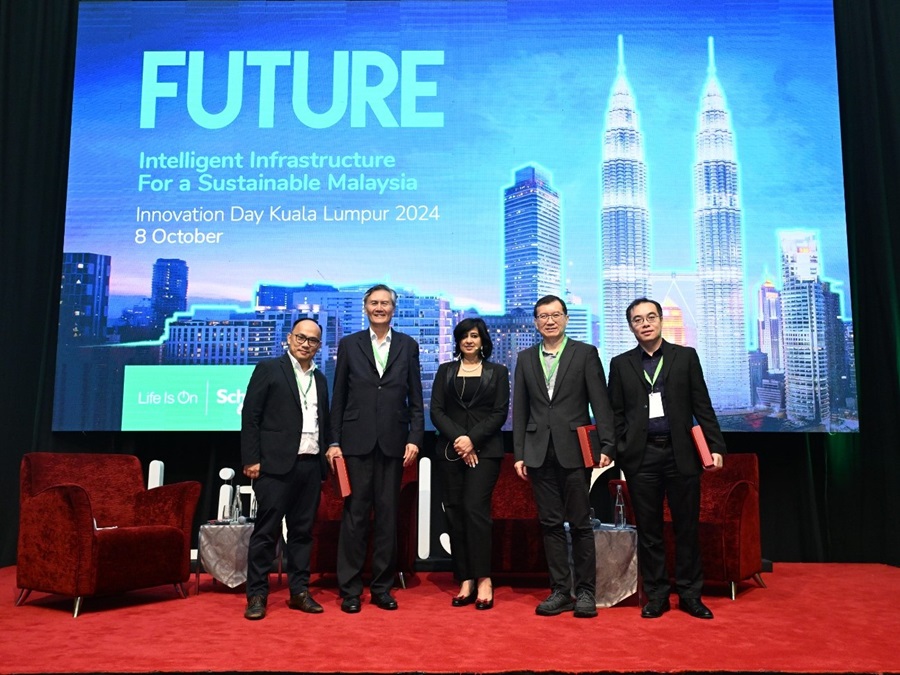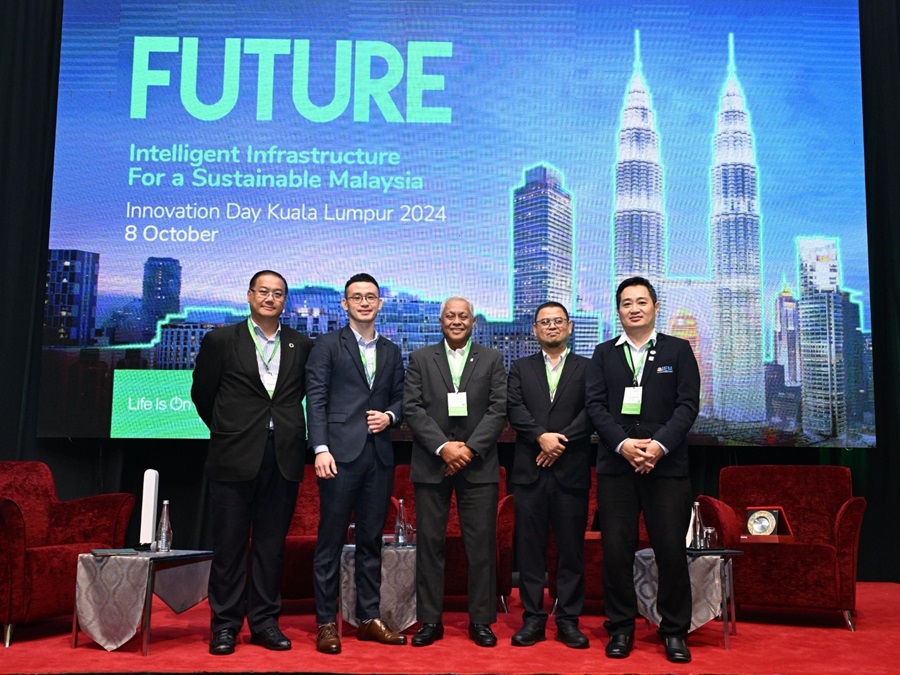Schneider Electric, the global leader in energy management and automation, has urged the modernisation of Malaysia’s aging buildings as a critical step to reducing carbon emissions. The call to action was made at the Schneider Electric Innovation Day Kuala Lumpur 2024, held on Tuesday (8 October) at the Kuala Lumpur Convention Centre.
Eugene Quah, Schneider Electric’s country president for Malaysia, highlighted the need for building owners to prioritise retrofitting efforts to replace outdated systems, which consume excessive energy and contribute to high carbon emissions.
“We must prioritise retrofitting existing buildings to lower carbon emissions. In fact, technology-focused retrofits that rely on modern digital and power management solutions can cut life-cycle carbon emissions by as much as 83 per cent and reduce the usage of energy in buildings by 50 per cent,” said Quah.

The building sector is the largest emitter of global greenhouse gases, responsible for 37 per cent of overall CO2 emissions. Notably, 70 per cent of emissions from buildings stem from operational carbon produced during daily use, through lighting, cooling, and energy consumption.
Schneider Electric emphasised that retrofitting older buildings with advanced technologies not only reduces carbon emissions but also enhances property values and attracts better tenants by improving building efficiency and sustainability.
Modern BMS Critical for Efficiency and Sustainability
A key component of the building modernisation effort is upgrading outdated Building Management Systems (BMS). Quah noted that older BMS pose significant risks that could compromise building efficiency and safety as well as jeopardise business continuity. He emphasised the need for modern BMS to future-proof facilities and meet growing demands for sustainability, health, comfort, and technical capabilities, including the Internet of Things (IoT), cloud computing, artificial intelligence (AI), and analytics.
“These advancements offer deeper insights and allow for more precise control at the room level, rather than just providing an overall view of an entire floor,” said Quah.
Building owners can now leverage advanced analytics monitoring software, such as Schneider’s AI-powered EcoStruxure Building Advisor, to improve BMS operational performance. The technology enables remote comprehensive asset monitoring and predictive maintenance, analyses energy consumption and HVAC performance, and provides continuous fault detection and diagnostics to optimise energy savings.
Digitalisation and Electrification: Decarbonising Buildings
Electrification, Quah explained, is key to decarbonising buildings, eliminating sources of direct CO2 emissions, and transitioning to a cleaner energy supply. He encouraged building owners to adopt microgrids that provide energy storage, demand response, and load management, while also installing electric vehicle (EV) charging stations to further sustainability efforts.
“The combination of digitalisation and electrification will be integral, allowing the ecosystem to utilise the IoT, big data, and AI to provide insights into real-time information and opportunities for decarbonisation of buildings,” Quah added.

A panel discussion on “Intelligent Building Designs for a Smarter Malaysia” featured experts from JLL, Sime Darby Property, Real Estate and Housing Developers’ Association Institute (REHDA Institute), and CapitaLand Investment Ltd. The discussion focused on how innovative technologies can drive sustainable business growth and reduce carbon footprints in the property sector.
Aylwin Tan, Chief Customer Solutions Officer at CapitaLand Investment, underscored the importance of collaboration in building a more sustainable future, citing the company’s partnership with Schneider Electric to build a Scope 3 platform that their tenants can refer to at CapitaLand’s Urban Co-Innovation Lab.
Urgent Action Required to Meet Net-Zero Targets by 2050
The urgency of decarbonising Malaysia’s building sector was emphasised by a recent PwC report, which revealed that Malaysia’s decarbonisation rate is currently at just 2.5 per cent annually—far below the 7.2 per cent needed to meet the Paris Agreement nationally determined contributions (NDCs) targets.
Quah called for accelerated action to achieve the nation’s net-zero goals, outlining Schneider Electric’s three-step strategy—strategise, digitise, and decarbonise—with ten associated priorities that help building owners to bridge their net-zero ambition and efforts in decarbonising and futureproofing their buildings and its systems.

At the event, Schneider Electric presented various solutions to help businesses accelerate their decarbonisation efforts, including:
- Grid of the Future – Empowers electric utility companies to implement agile grid digitalisation and enhance collaboration across the electricity value chain.
- Building of The Future – Modern Building Management Systems (BMS) and analytic monitoring services that leverage data from BMS’s operational performance are critical in effectively driving decarbonisation and efficiency for aging buildings, crucial for owners aiming to meet net-zero targets.
- Water Treatment Plant of the Future – Digital Twin technology and software-defined capabilities that are essential for optimising operations, addressing water shutdowns, and enabling data-driven decisions for more efficient, sustainable water management and treatment.
- Energies and Chemical of the Future – Energy management and automation solutions, combined with AVEVA’s integrated data platform and advanced industrial software, enable energy companies to leverage information, AI, and human insight to drive efficient and sustainable performance.
The Innovation Day 2024 brought together industry experts from sectors including energy, IT, and real estate, who discussed sustainable strategies for energy transitions, digitalisation, and how to tackle the pressing challenges posed by climate change in Malaysia.![]()

